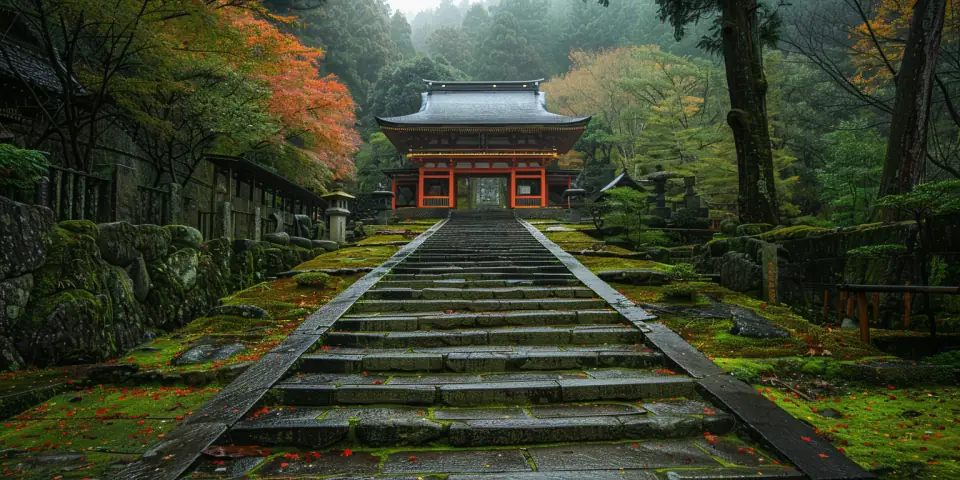
The Art of Japanese Kabuki Theater: A Backpacker's Introduction to Dramatic Stage Performances and Elaborate Costumes
The Origins and Evolution of Kabuki Theater: Understanding the Cultural Significance
ImmerSE YOURSELF IN THE WORLD OF KABUKI THEATER
As you delve into the enchanting realm of Kabuki theater, prepare to be transported to a world of stylized drama, vibrant costumes, and mesmerizing performances. This traditional Japanese art form has captivated audiences for centuries with its unique blend of music, dance, and elaborate stage design.
UNRAVELING THE MYSTIQUE OF KABUKI ACTING
At the heart of Kabuki lies its distinctive acting style, characterized by exaggerated motions, precise footwork, and dramatic facial expressions. Male actors, known as onnagata, take on female roles with remarkable conviction, showcasing their versatility and skill. To fully appreciate this art form, observe how the actors harness their bodies to convey emotion, using every gesture and pose to tell a story.
UNLEASHING THE POWER OF VISUAL STORYTELLING
Kabuki’s visual splendor is a feast for the senses. Elaborate costumes, intricately designed sets, and expertly applied makeup transport audiences to feudal Japan or mythical realms. Pay attention to the use of lighting, which can instantly shift the mood from tranquility to tension. As you immerse yourself in the performance, allow your imagination to run wild, and let the visuals guide you through the narrative.
TIPS FOR ENHANCING YOUR KABUKI EXPERIENCE
- Familiarize yourself with Japanese culture: While not essential, having some knowledge of Japanese history, literature, or mythology can enrich your understanding and appreciation of the performance.
- Focus on body language and facial expressions: Kabuki acting relies heavily on non-verbal cues, so train your attention on the actors’ physicality and facial expressions to grasp the emotional nuances of the story.
- Let go of linear storytelling: Kabuki narratives often unfold in a non-linear fashion, jumping between scenes and timelines. Embrace this unique narrative structure, and allow yourself to be swept up in the performance’s emotional currents.
By embracing these tips and approaching Kabuki with an open mind and heart, you will unlock the secrets of this captivating art form and embark on a transformative journey into the very essence of Japanese culture.
Dramatic Performances and Elaborate Costumes: Unpacking the Artistry Behind Kabuki
As you embark on a journey into the world of Kabuki theater, approach this traditional Japanese art form with an open mind and heart. By doing so, you’ll be able to unlock its secrets and fully immerse yourself in the captivating performances.
At the core of Kabuki lies its distinctive acting style, characterized by exaggerated motions, precise footwork, and dramatic facial expressions. To fully appreciate this art form, observe how the actors harness their bodies to convey emotion, using every gesture and pose to tell a story. Pay particular attention to the onnagata, male actors who take on female roles with remarkable conviction, showcasing their versatility and skill.
Kabuki’s visual splendor is a feast for the senses, transporting audiences to feudal Japan or mythical realms. Elaborate sets, intricately designed costumes, and expertly applied makeup create an immersive experience. Note how lighting can instantly shift the mood from tranquility to tension. As you immerse yourself in the performance, allow your imagination to run wild, and let the visuals guide you through the narrative.
To enhance your Kabuki experience, focus on non-verbal cues such as body language and facial expressions, which are essential for grasping the emotional nuances of the story. Be prepared to let go of linear storytelling, as Kabuki narratives often unfold in a non-linear fashion, jumping between scenes and timelines. Embrace this unique narrative structure, and allow yourself to be swept up in the performance’s emotional currents.
Finally, remember that having some knowledge of Japanese culture, history, or literature can deepen your connection with the performance. However, it is not essential. What is crucial is approaching Kabuki with a willingness to learn and an openness to new experiences. By doing so, you’ll be able to unravel the mystique of this ancient art form and unlock its secrets, allowing yourself to be fully transported into the world of Kabuki.
A Beginner’s Guide to Appreciating Kabuki: Tips for Backpackers and Travelers
Unlocking the Secrets of Kabuki: A Journey into Traditional Japanese Theater
As you prepare to embark on a journey into the world of Kabuki, leave any preconceptions behind and approach this traditional Japanese art form with an open mind and heart. To fully immerse yourself in the captivating performances, focus on the actors’ distinctive acting style, characterized by exaggerated motions, precise footwork, and dramatic facial expressions.
Unraveling Emotions through Body Language
Observe how the actors harness their bodies to convey emotion, using every gesture and pose to tell a story. Pay particular attention to the onnagata, male actors who take on female roles with remarkable conviction, showcasing their versatility and skill. Note how they use subtle hand movements, posture, and eye contact to convey complex emotions.
Immersing Yourself in Visual Splendor
Kabuki’s visual splendor is a feast for the senses, transporting audiences to feudal Japan or mythical realms. Elaborate sets, intricately designed costumes, and expertly applied makeup create an immersive experience. Be aware of how lighting can instantly shift the mood from tranquility to tension. Allow your imagination to run wild, and let the visuals guide you through the narrative.
Deciphering Non-Verbal Cues
To fully appreciate Kabuki, focus on non-verbal cues such as body language and facial expressions, which are essential for grasping the emotional nuances of the story. Be prepared to let go of linear storytelling, as Kabuki narratives often unfold in a non-linear fashion, jumping between scenes and timelines. Embrace this unique narrative structure, and allow yourself to be swept up in the performance’s emotional currents.
Tips for a Deeper Connection
To enhance your Kabuki experience, consider the following tips:
- Arrive early to absorb the pre-show atmosphere and observe the actors’ preparations.
- Dress modestly as a sign of respect for the traditional art form.
- Avoid distractions during the performance, such as taking photos or checking your phone.
- Focus on the actors’ eyes, as they are the windows to their characters’ souls.
- Be patient with yourself if you don’t understand every detail – allow the emotions and visuals to guide you.
By following these tips and approaching Kabuki with an open mind and heart, you will be rewarded with a deeper understanding and appreciation of this traditional Japanese art form.
Recent Posts
- Connecting the Past and Present of Shugendo - The Revival of Japan's Ancient Mountain Ascetic Tradition Jun 23, 2024
- Nikko Toshogu Shrine: A Symbol of Japanese History and Culture Jun 23, 2024
- The Power of Character: Embodying Virtues for a Just Society Jun 23, 2024
- Creating Engaging Articles for Vegetarian Travelers in Japan Jun 23, 2024
- Exploring Japan's Festivals and Events Jun 23, 2024
- Hiking in Kamikochi, Japan: A Comprehensive Guide Jun 23, 2024
- Understanding Kendo: The Japanese Martial Art Jun 23, 2024
- The History and Significance of Washi Paper in Japan Jun 23, 2024
- Exploring Fushimi Inari Shrine: A Guide to Japan's Cultural Icon Jun 23, 2024
- The Bushido Code of Respect: Honoring Local Customs, Traditions, and Etiquette on Your Japan Journey Jun 23, 2024
